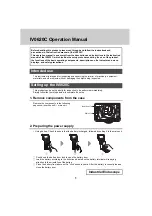10 - 1
Transpector XPR 3+ Operating Manual
Chapter 10
Glossary
Anode
The anode is the structure in the ion source in which ions are created by
electron impact. It can be formed from a mesh, such as in the open ion
source, or from a solid tube, such as in the closed ion source. Its electrical
potential is positive with respect to the filament, focus lens, total pressure
plate, pole zero, exit aperture and Faraday cup.
Appearance Potential
The minimum electron energy required to produce, by electron
bombardment, a given ion in its lowest energy state.
Atomic Mass Unit (AMU)
An atomic mass unit is a unit of measurement for the mass of a molecule
or ion. It is based on the definition that the mass of an atom of the
carbon-12 isotope is exactly 12.
Background
The background is the residual atmosphere in a vacuum apparatus when
no gases are being deliberately introduced.
Bakeout
A bakeout is the process of heating a vacuum chamber above the ambient
temperature in order to accelerate the desorption of species such as water
vapor and hydrocarbons which are adsorbed onto the inner surfaces of the
vacuum chamber.
Center Voltage
The center voltage is the DC potential to which the quadrupole rod RF and
differential DC potentials are referenced.
Closed Ion Source (CIS)
The closed ion source is an ion source in which the pressure in the
ionization region is higher than in the rest of the analyzer sensor. This is
usually accomplished by fabricating the anode from a solid walled tube
instead of an open mesh. This type of source is usually employed to
measure trace contaminant levels in a process gas.
Conductance
The conductance of a gas flow channel is the ratio of the gas quantity
flowing through the channel to the pressure drop across that channel.
Cracking Pattern
See
Fragmentation Pattern
.


















